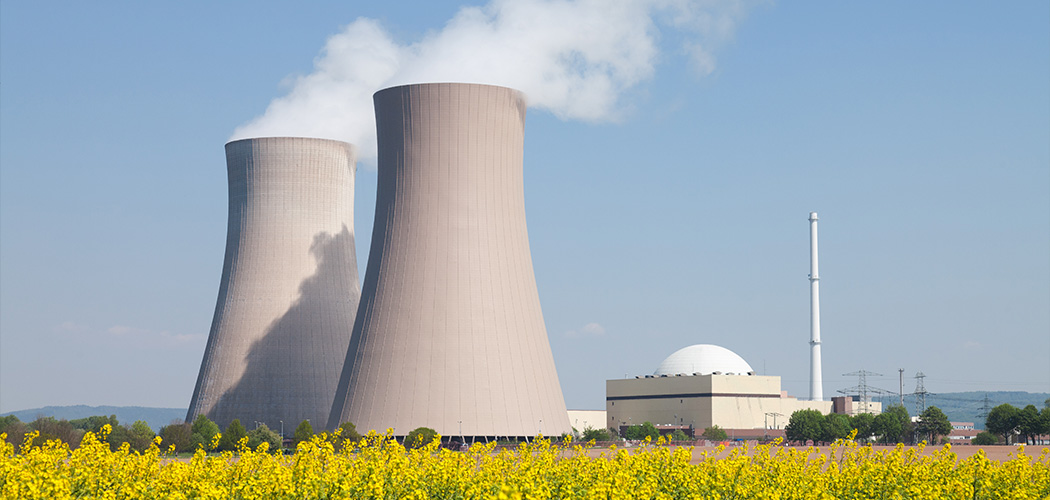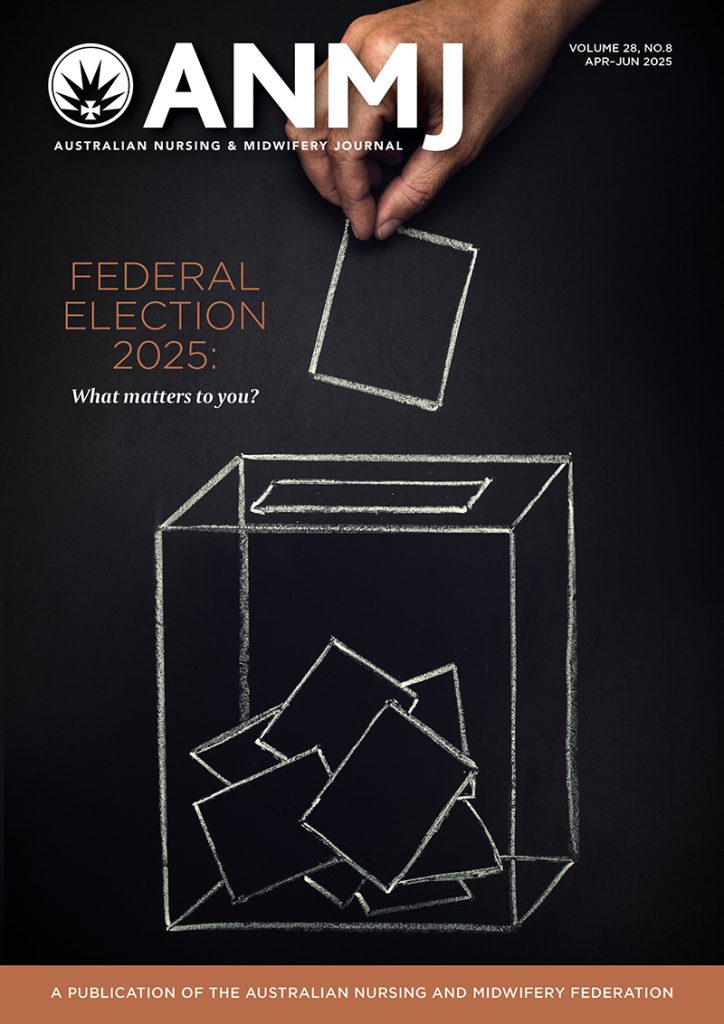After all the budget hype, it is important that the Coalition’s plan to introduce nuclear energy into Australia’s’ energy mix does not get lost in the noise. This plan has ignited widespread debate, with many communities expressing concerns about the potential risks nuclear power poses.
The proposal to establish nuclear reactors across the country raises serious questions about public health, environmental sustainability, and Indigenous rights. This article explores the implications for nurses and midwives, emphasizing that nuclear energy is not the ‘clean’ solution it is often claimed to be.
Understanding the proposal
The Coalition has proposed the development of seven nuclear reactor sites, including Small Modular Reactors (SMRs) and larger nuclear plants, to produce energy for Australia by 2035-2037. These sites are planned for New South Wales, Victoria, Queensland, South Australia, and Western Australia. While on paper, it appears that this is a measure to drive down Australia’s carbon emissions, recent evidence from major researchers, scientists, engineers and public health advocacy groups highlight that nuclear energy is dangerous, risky, wasteful, and will take too long and cost too much to be implemented in Australia as a sincere response to climate change. We discuss these concerns below.
Health and safety risks
Australia has maintained a legislative ban on nuclear power, introduced by the Howard Government in 1998, due to the health risks posed to the community. Studies have shown that residents living within 30km of nuclear plants have higher risks of being diagnosed with thyroid cancer and leukemia. Furthermore, nuclear disasters such as Chernobyl and Fukushima have resulted in catastrophic health and environmental consequences. The explosion at the Chernobyl nuclear power plant resulted in 28 deaths within the immediate months after the event, however the total death could reach 4,000 deaths. Though modern reactor technology is much safer than the Chernobyl reactors, the technology is not immune to disaster. The Fukushima nuclear disaster was linked to a 9.0-magnitude earthquake, which led to a 15-metre tsunami. The tsunamic caused flooding at the plant, which sparked the disaster.
Nurses were among those impacted by the Fukushima disaster. A nurse recalled:
“It was really tough both for the staff who evacuated and for the staff who stayed. The nuclear power plant accident was constantly on the news, and that made people more and more nervous… every day there were more and more staff that couldn’t come in to work… I was in charge of a ward, so I’d end up thinking to myself, ‘Not again. How am I going to share out the work?’”
Researchers have identified that the events have led to observable health effects such as abnormal fetal brain development and increased risk of cancer.
Impact on First Nations Australians
First Nations Australians have historically disproportionately experienced the adverse impacts of nuclear technology development. Weapons testing between 1952 and 1963 and uranium mining on ancestral lands have resulted in severe environmental, cultural, and health consequences for First Nations communities. The proposed nuclear waste dumps further exacerbate these issues, undermining Indigenous sovereignty and self-determination. Many First Nations communities advocate instead for renewable energy projects that offer a more sustainable pathway for economic development.
Economic viability
The costs associated with nuclear power are exorbitant compared to renewable energy sources such as wind and solar. The estimated cost for the capital works of the nuclear plants stands at a staggering $120 billion, with total system costs potentially reaching a staggering $600 billion according to various economic reports. The GenCost 2023-24 Report found nuclear is one of the most expensive energy options available to us.
Time constraints
Nuclear power plants require significant construction time, often exceeding 15 years before becoming operational. A nuclear project in the United Kingdom, will have taken 25 years to construct before it is finally operational. This timeline presents challenges in meeting Australia’s critical energy transition targets and climate commitments.
Water usage
Additionally, nuclear reactors demand substantial quantities of fresh water for cooling, placing immense strain on local water resources. Some models have seen that just one medium nuclear power plant could use up to 50 million litres a day!
Advocating for Renewable Energy
As nurses and midwives, we have a unique opportunity to advocate for a healthier, more environmentally friendly energy source. Climate scientists and many First Nations communities are supportive of renewable energy sources like wind and solar. Renewables are not only more cost-effective but also offer more immediate job opportunities and regional development, without introducing the health and environmental risks that are associated with nuclear power. By supporting renewable energy projects, we can help mitigate the health impacts of Climate Change, whilst also ensuring that the healthcare needs of all communities are met.
The proposed nuclear energy scheme in Australia presents considerable limitations compared to renewable energy alternatives. It is crucial for healthcare professionals, particularly nurses and midwives, to stand in solidarity with First Nations Australians and advocate against nuclear technology development. By prioritising renewable energy investments, we can contribute to a sustainable and healthier future for all Australians.









18 Responses
It appears that the government will conceal where all the nuclear waste will be stored. If they are being secretive about this what else will the public not be told. Who will be held responsible if something does go wrong. Will it be a usual government ploy pass the buck.
Nuclear power today is much more reliable and is in use in many countries it is much safer even compared to wind. It takes our government 3 times as long to build compared to China as at least 2 to 3 years of approvals are required by our many departments this increases costs. China is opening 1 coal fired power station a week even while building more nuclear power stations. Wind, solar and batteries will always need hydro, has and for some time coal. An essential service should be government owned or controlled. Both governments have sold us out to multinationals
Liberal Party Peter Dutton is promoting the nuclear power plant for the sake of elections. They are against renewable energy generation and climate change. They have not calculated the cost of the nuclear power plants, how many years it will take to build? How much water will be used every day, and where will the nuclear waste be stored? If there is an earthquake or tsunami, there will be a nuclear leak ! They ignored the warnings of scientists, did not tell the real data, and misled voters! Because the purchase of nuclear submarines has cost taxpayers 368 billion US dollars (568 billion AUD dollars), plus the 600 billion for the nuclear power plants, a total of 1168 billion, which will be paid back by several generations of taxpayers!!!
What about health effects of nuclear testing in the 1950s on veterans who had to attend tests sites. sometimes with no protection at all and Australians generally in the paths of fallout (Royal Commission into Atomic Testing reports–were available on the Australian Parliament’s website)?
What about the effects of uranium mining on miners and people living near uranium mines (lung cancers and other diseases)?
What about the fact that it was Australian uranium that fuelled the Fukushima power plants?
What about the continuing using aftermath of the Fukushima disaster–e.g. irradiated waste water is being discharge into the ocean off Fukushima.
Do Australians realise that no private firms are willing to fund Dutton’s mad plan so Australian taxpayers will have to foot the bill for any nuclear power plants he might attempt to build?
Do Australian voters realise that they should be very careful about choosing “independents” to vote for, as some of them are not necessarily opposed to nuclear energy, if not now, but in the long term. Voters need to investigate the backgrounds, track records, and funding sources for all candidates they may vote for.
Thank you for taking the time to respond! Do you think it would be good to have an article where we put forward some more questions like this? Things that nurses and midwives want answered before Australia dives on in to nuclear energy?
Warm regards,
Catelyn (author of the original post)
There are certainly Risks associated with Nuclear energy generation & use, but on researchig the history of fossil fuel, there are far more deaths associated with these fuels than with Nuclear energy.(not withstanding war time use of Atomic Energy) The Cost & time associated in building these plants I think is the Main argument against going Nuclear in it’s present form. (eg.Nuclear Fission)
Agreed Allan. We are in a bit of a conundrum with our energy supply. I am quite interested in our transition to renewables. Renewable energy already provided 39.4% of Australia’s total electricity generation in 2023, up from 35.9% in 2022. So, I’m hopeful that we might have a solution to our problems if we continue to invest in renewables. The next question is how we promote battery storage and supply energy to other parts of the world to position us as energy leaders. I went to an interesting webinar on this the other night. Still much to consider!
Why they would waste so much money and take so long is beyond me, people need to realise that the current population 50 and over probably won’t see nuclear it is the younger ones like my grandchildren who will be the ones that suffer, Do not go down this nuclear path
Companies not taxpayers, invest in renewable energy and sell cheap electricity back into the grid. No company will build their own reactor. The entire cost as well as the insurance is paid entirely by the taxpayer. After a huge upfront cost, the reactors provide the MOST expensive electricity of any type. It is a double cost to the taxpayer.
I wondered about this too. I’d love to see more detailed economic analysis than what was discussed in the Frontier Economics Report. Hoping some more information is forthcoming!
-Catelyn (author)
Not true Matt, it’s way more complicated than that. The people that put up money for wind farms did not provide the infrastructure they plug into – the grid. It’s a highly complex, finely tuned machine that needs to be balanced to the millisecond. Inertia is everything and grid inertia comes from large scale powerplants via huge flywheels attached to the turbines. They provide the ‘oomph’ needed to keep the grid alive as such. (there’s more to it but that will suffice here I think)
Wind and solar provide zero inertia, and you can get away with this up until a certain point (I say 30% max before things get very expensive) but wherever that point is you have to start introducing other things onto the grid to provide inertia. We’re currently using batteries and ‘Spinning Machines’, a grid powered machine with a flywheel basically, as well as large condensers. But all these are limited because they rely on power from the grid and when these options are used up, load shedding begins. All the extra kit needed for inertia goes onto our bills, as do the poles and wires needed in the ever expanding cobweb of transmission needs. We, the electricity user, pay for the whole grid, not just “cheap” electricity from a windmill when the wind is blowing.
If we, the taxpayer, were to pay for our own reactors then we, the people, would own them. The value of that is hard to overstate.
Right now, it’s only subsidies that provide profit for the venture capitalists venturing into wind and solar, and the farms are so inefficient they can’t turn a profit on their own. Solar returns about 20% capacity, wind around 30%.
So they didn’t pay for the grid, they rob it of inertia, need a whole bunch of extras, can’t guarantee the next round of power, and the subsidised profits go overseas. All that after buying the non-renewable machines from China, that has 90% of the entire supply chain for wind and solar sown up.
Build nuclear, we the people own it, we develop an entire industry for the long term future, and we will never have to rely on venture capitalists or China for energy ever again. And it can be done cheaper than coal if we do it properly.
I think that it would wrong for anyone to build a nuclear reactor that uses a fission process.
This means that nuclear fusion would be used. This produces minimal nuclear waste.
The other part is I do think that the whole country needs to be rewired which would save a massive amount of money.
The author may in fact believe what she wrote, but everything here is straight from the Greenpeace anti-nuclear playbook of propaganda. Here, I’ll give you the lowdown on why this piece is wrong.
1 Health and safety – Nuclear power is statistically the safest way to generate electricity, which includes wind and solar. Bringing up Chernobyl, a 1950s soviet design ran by mad soviets – is akin to arguing we should ban air travel because of the Hindenburg disaster. No, 4000 people won’t die from radiation poisoning 40 years after the event, and it pains anti-nuclear zealots that no one is in fact dying from cancer, the numbers never came in. Bringing up Fukushima, where not a single person died through radiation doses but over 18,000 Japanese died from the earthquake and tsunami, is also a bad argument. It’s also disrespectful to the people of Fukushima who still struggle with the stigma and get inappropriately used in propaganda. You couldn’t get a worse meltdown than Fukushima, but no one died. That’s an argument FOR its safety. Radiation clouds are not as dangerous as the crazy Linear No Threshold model suggests.
2. The impacts of bomb testing anywhere on earth have absolutely nothing to do with nuclear power, period.
3. The economics of nuclear power make perfect sense in every country that uses it. The Gencost report uses a terrible metric for measuring costs. The metric (LCOE) is applicable ONLY to fueled power plants and variable wind and solar do not qualify. This is because their output capacity is, well, a variable. The variable fluctuations means zero has just as much value as total capacity. No accuracy on cost can be obtained with such a metric. It’s horrible math from the CSIRO.
4. Time restraints. France built over 50 reactors in a single decade. Germany, California, and Australia have been meddling in renewables for 25 years and are nowhere near emission targets. France kills all three for both emissions and prices.
5. Water usage. That section is just plain wrong. The water nuclear power “uses” for cooling goes back in the river or ocean, it’s not lost except for some condensation you see coming from the towers, which is about 5%. If you think water is “lost” in steam, you need to revisit your Year 7 science classes.
6. Renewable energy is a furphy. The materials used in wind, solar, batteries, and the rest of the big idea make the Energy Returned On Energy Invested unsustainable. Just because the trending meme is to install wind and solar to reduce emissions, does not necessarily make it a correct assumption. It has to prove itself to do the job it’s tasked to do – replacing coal and gas – which it never has and never will. It’s a physics argument and nothing to do with economics.
It’s a fact that the laws of physics are at play here, not politics, and the laws of physics show that only nuclear can replace coal and gas, otherwise renewables would have done it by now. Time to chuck in the towel on the worst idea humanity has ever had.
Thank you for taking the time to engage with my article. I genuinely appreciate that we both care deeply about the future of energy in Australia, and I welcome opportunities to have thoughtful, evidence-informed discussions about these complex issues. I’ve had a look at your comment, and you raised some interesting points.
To keep my original article short, I didn’t delve into the nuts and bolts of the evidence I reviewed. I understand the frustration with misinformation in public discourse, and I agree that decisions should be grounded in rigorous, contemporary science—not outdated narratives. So, in the interest of transparency, I’ll pop a few thoughts below. Eager for your further commentary on these thoughts.
Much of the concerns surrounding health and safety come from an extensive number of epidemiological peer reviewed publications. They are best captured in a 2024 meta-analysis of 47 studies covering over 480,000 nuclear workers and 7.5 million residents living near nuclear power plants in 17 countries. This meta-analysis [1] specifically examined populations exposed to radiation levels within current regulatory dose limits, thus excluding disaster contexts like Chernobyl. The statistically significant (p=<0.05) results showed increased rates of several cancers for residents living in a 30km radius of a nuclear power plant (CI = RR 1.05, 95% CI: 1.00–1.09). The findings support a more cautious interpretation of nuclear safety. While radiation doses from operational nuclear plants are low, they are not necessarily harmless—particularly for vulnerable populations. Moreover, the presence of statistically significant risks even within regulatory thresholds calls for a precautionary approach to energy planning. This is a question I am hoping to see addressed in the policy plans.
Regarding Fukushima and Chernobyl: I agree, these disasters shouldn't be the only reference point in debates. But dismissing their relevance entirely risks overlooking systemic failures and the human cost of underpreparedness. Mortality aside the social, psychological, and displacement impacts have been profound and well-documented. Many evacuated from Fukushima because of the radiation risk, and this had profound impacts on health service delivery (short staffing), displacement and mental health [2]. Public trust and lived experience matter.
In terms of renewables, according to the [3], renewables were the largest source of global electricity growth in 2023 and are on track to exceed coal by 2025. Renewable energy provided 39.4% of Australia’s total electricity generation in 2023, up from 35.9% in 2022 [4].
Regarding water usage, while some of the water is indeed recovered – the point I was illustrating is that to cool the reactors, water is needed. Some of the nuclear plants are presently planned for areas that are known to be impacted by drought. As an example, France experienced severe droughts in 2022, which reduced river water levels essential for cooling some reactors. This situation necessitated further reductions in reactor output to comply with environmental regulations concerning water temperatures. Amidst other challenges with their reactors, Électricité de France (EDF) reported a record net loss of €17.9 billion in 2022, primarily attributed to the decreased nuclear output and the costs associated with reactor inspections and repairs.
As for the economics and emissions arguments you raised, I believe they deserve their own careful, transparent analysis. I agree we need solutions that work. My intention in the article was not to "chuck in the towel" on nuclear energy outright, but to challenge some of the biggest concerns we have on nuclear, so we can have better policy especially in Australia where context—social licence, cost, speed of deployment, and First Nations consent—must shape our choices.
I hope this response helps clarify that my position is not anti-science, nor anti-nuclear by default, but grounded in a nurse’s commitment to do no harm, advocate for health equity, and ensure that energy solutions do not externalise their costs to vulnerable people or ecosystems.
Warm regards,
Catelyn
References
[1] Lin RT, Boonhat H, Lin YY, Klebe S, Takahashi K. Health effects of occupational and environmental exposures to nuclear power plants: a meta-analysis and meta-regression. Curr Environ Health Rep. 2024;11:329–339. https://doi.org/10.1007/s40572-024-00453-8.
[2] Tsujiuchi T, Yamaguchi M, Masuda K, et al. High prevalence of post-traumatic stress symptoms in relation to social factors in affected population one year after the Fukushima nuclear disaster. PLoS One. 2016;11(3):e0151807.
[3] International Energy Agency. Renewables 2023: Analysis and forecast to 2028. Paris: IEA; 2023.
[4] Clean Energy Council. Clean Energy Australia Report 2024 [Internet]. Melbourne: Clean Energy Council; 2024 [cited 2025 Apr 3]. Available from: https://www.cleanenergycouncil.org.au/resources/resources-hub/clean-energy-australia-report-2024.
Thanks for the reply, Catelyn, appreciate it. This is a monster subject that needs a lot of further discussion and I fully understand that short articles can’t cover everything. You seem to have a handle on science and I can promise you now, not many do on this topic! I’ve been into this for 15 years and take a philosophical approach now as much as scientific.
I’m not here in an attempt to win an argument, by the way, just talk.
Ok, so the study. I don’t dismiss it out of hand but it is just one study. It appears they did their best to eliminate biases. But it is a study nonetheless and not hard evidence. Other studies suggest otherwise to higher leukemia, thyroid cancer, and mesothelioma rates but I won’t go down the road of study vs study. The latter, mesothelioma, can easily be attributed to asbestos that was used extensively in older nuclear plants. If low dose radiation from nuclear power plants is in fact harmful over long periods, then how do we explain the people of Ramsar, Iran; The Guarapari Region, Brazil (where people flock to the radon beach for the health benefits); The Yangjiang Region, China; The Kerala Region, India; and many other places that have much MUCH higher levels of radiation found around a nuclear plant but have little or no evidence of increased cancer rates? Hormesis? Maybe.
Even Grand Central Railway Station in New York has much higher levels than normal background radiation due it being carved through granite. A nuclear worker’s personal monitor would start beeping if he or she walked into Grand Central and they would not be permitted in if the same standards were set. Hold a Geiger counter to a granite benchtop and you’ll hear it do it’s thang.
Point is, radiation is completely overblown and a distraction from what we’re trying to achieve here – getting off coal.
Everything is radioactive, you, me, and bananas. Coal too. It’s emissions do contain radioactive particles that would not be allowed under nuclear regulations – go figure.
Now when it comes to renewables, they are simply not up to the task. As I said, they would have done it by now. I was well aware of this by 2016 when Germany was flogging its renewable dead horse – it still is – and now they have no economy to speak of. Manufacturing had to bail and the same has happened across Europe and once a civilisation has to redirect its energy away from manufacturing and into more ‘pressing’ areas (like keeping city fridges going) it’s pretty much cooked.
Australia has done it too. We’ve redirected power away from industry to keep the lights on at home, but now load shedding includes household suburbs too. We’re really on the brink.
That’s what the “cost of living” is – energy.
What we tend to do in the First World is focus on all the negatives of both technology and energy. A whole new class of antivaxxers has arisen against medical science because the benefits are not appreciated or are dismissed without a thought due to fear of the real or imagined side effects. The same has happened with electricity. We don’t appreciate what it does for us. We can’t just order electricity from Amazon in any type we like, we have to go with what works. Alternative electricity has the same effect as alternative medicine – it costs a bundle and does nothing.
That’s renewables, an expensive way to send a country down the gurgler.
The CSIRO report uses the same method as Lazard in America, but Lazard states on every single page of its reports that “This analysis has been prepared by Lazard for general informational and illustrative purposes only, and it is not intended to be, and should not be construed as, financial or other advice.”
Now, Chris Bowen the Minister For No Energy (who I helped vote in btw) is doing the exact opposite. The rough quote from the CSIRO is the New Holy Testament and I’m afraid to say I’ll be crossing the floor this time, and voting for the old enemy, because they simply have a better handle on energy.
I still for the life of me can figure out what anything has to do with First Nations people…anyhoo.
Cheers.
I agree, dialogue around big policy discussions is important. While we might differ on a few of our perspectives, but conversations such as this strengthen the overall decision-making.
I believe some people following this article might be interested to read more on some of the points you’ve raised. Would you have the capacity to provide some of the sources you mentioned? In particular, I’d be curious to read more about the data from high background radiation areas and Germany’s economic position after the renewable transition.
From a health lens, my entry into this space is shaped by concern for the people nurses and midwives care for—especially those experiencing structural disadvantage. When we think about energy transitions, I am positioned to believe we must also consider how decisions play out in the waiting room, in rural clinics, and across communities facing rising heat, housing stress, or exposure risks. The science matters deeply—but so does the lived experience of those navigating it on the ground. There is a coalition of a number of organisations, Renew Australia for All, who are currently looking at the challenge of energy supply (as it intersects with equity, supply, and climate change). Well worth looking at if you have the opportunity. The most interesting part about the coalition is all the diverse stakeholders they pulled into the discussion.
Thank you again for taking the time to engage so respectfully. I’ve really valued the tone and openness of your response.
– Catelyn
France has more than 55 nuclear reactors with a population about double Australia’s.
This equates to 1 reactors every 1 million people. These are spread over a area the size of Queensland.
There has been NO health issues in France.
To be equivalent to France we should have 27 nuclear power plants.
This allows them to have a huge manufacturing base ranging from Volvo and citron cars to fighter and commercial aircraft just to name a few.
When are we going to wake up.
Ps they also have wind and solar but only close to cities and this reduces the prohibited cost for transmission line.
1. I will stick with the CSIRO report as the most trustworthy and unbiased.
2. Then I will follow the money, who currently owns the uranium mines and which party to they fund and support?
3. Then I will note that every cost and timeline to build almost any major infrastructure project in Australia blows out significantly, whereas we need action now.
So happy to stick with my battery and solar panels.